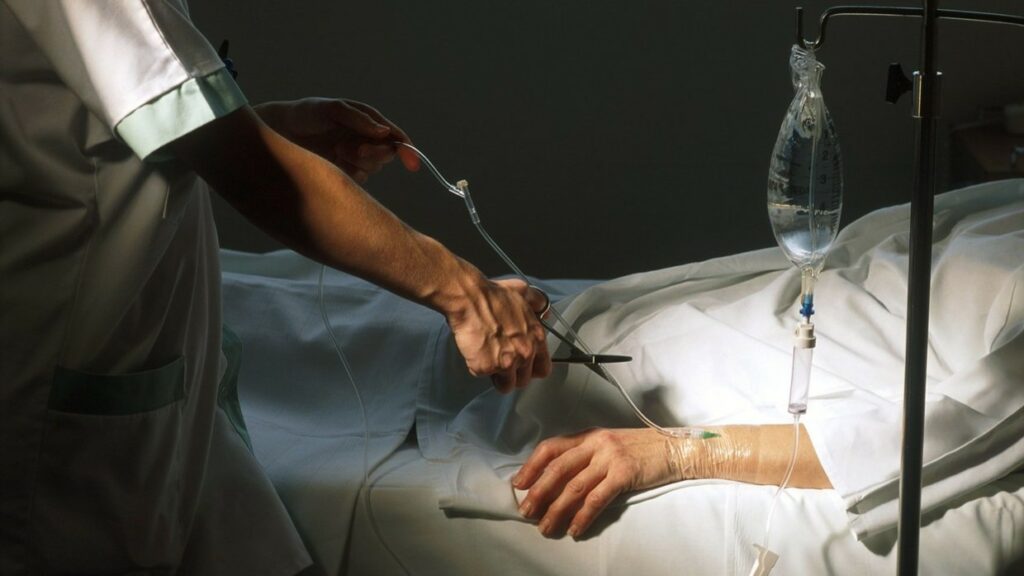MAiD / Euthanasia
Hushed Horrors
Nearly 3,000 people died by euthanasia in Belgium in 2022. One of them was 36-year-old Alexina Wattiez, who was suffering from terminal cancer. In 2021 she was told that she likely had less than a year to live; by March 2022, Alexina was declining rapidly. She decided to request euthanasia. A doctor and two nurses came to her home where she lived with her partner Christophe Stulens and his 15-year-old daughter Tracy to administer the lethal injection. After a brief sleep before the fateful event, a nurse woke Stulens and his daughter and asked if they wanted to say goodbye.
After the farewell they left the room to wait on the terrace and the doctor went in with syringes. They expected Alexina’s death to be swift and silent. After a moment, they heard screams. “I recognized her voice,” Stulens said. “Afterwards we saw her lying on the bed with her eyes and mouth open.” A post-mortem examination revealed the truth: Alexina had been suffocated to death. Some news reports indicate that the doctor used a pillow when the drugs failed to kill her; others say that the nurses took turns holding the pillow over the young woman’s face until she asphyxiated.
The family is now suing, with their lawyer stating that they are seeking to ensure that this sort of thing—being killed via suffocation rather than lethal injection—never happens again. The Public Prosecution Service of Liège has also apparently opened a murder investigation, although they haven’t explained why one method of killing administered by medical professionals would be homicide and the other healthcare. In fact, Belgian politician Jacques Brotchi hastened to make the distinction. “What happened is not euthanasia,” he assured the press. “Such a definition of this terrible situation devalues the gesture of euthanasia, which accompanies a person to the end without pain.”
The charges are probably just for show—a display of stern disapproval for making a spectacle of Belgium’s euthanasia regime. In 2018, a public prosecutor in the Hague similarly announced that charges were being laid against a doctor for euthanizing an elderly woman with dementia in a nursing home. The woman had given several different statements about her desire for euthanasia over time, but her family decided that it should go ahead. Since the woman didn’t understand what was unfolding, the doctor laced her coffee with sedatives while she chatted pleasantly with her family, planning to inject her once she fell unconscious. When this didn’t work, he gave her another sedative via injection.
As he prepared to give her the final, lethal, injection, she suddenly stood. As she struggled, several family members pinned her down while the doctor injected her. This time it worked, and she died. He was acquitted in court for his actions, with the judges stating: “We believe that given the deeply demented condition of the patient the doctor did not need to verify her wish for euthanasia.” The entire thing, people seemed to agree (tsk tsk!) was just unseemly—but at the end of the day, the doctor had been asked to produce a corpse, and he had done so. The Belgian pillow euthanizers will likely receive a similar verdict if their case even makes it that far.
Euthanasia advocates hate these stories because when the mask slips, people catch an unvarnished glimpse at what is going on behind all the soothing, medicalized language: killing people. The term euthanasia literally means “good death”—the premises are built into the name. To mainstream the idea that medical professionals should kill patients, we must use terms that distract from that reality: end-of-life care; physician-assisted death; medical aid in dying. Euthanasia activists paint a picture of people being put out of their suffering surrounded by their loved ones as soothing music plays in the background, dying peacefully and with dignity. If you didn’t know better, you’d hardly think someone was being killed—and that’s the point.
READ THE REST OF THIS COLUMN AT THE EUROPEAN CONSERVATIVE








